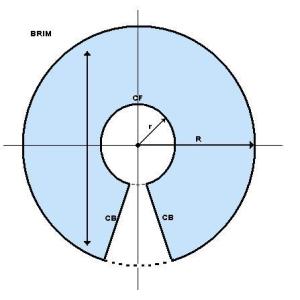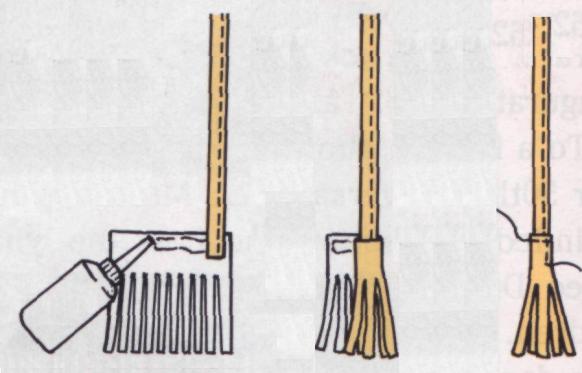 Featured: Cloche hat from Banana Republic
Featured: Cloche hat from Banana Republic
A buckled cloche for Spring. Easy-peasy and pretty!
You will need:
- Graph paper
- approx. 1 yd. of fusible interfacing, 45″ wide
- approx. 1 yd. of bottom-weight or upholstery fashion fabric, 54″-60″ wide
- approx. 1/2 yd. of lining fabric, 45″ wide
- approx. 3/4 yd. of grosgrain ribbon, 2″ wide
- 1 belt buckle, 1 ½” wide
- coordinating thread
DIMENSIONS
This hat draft is a medium size for a head circumference of approximately 23” [58.5cm].
PATTERN

Grid: 1 square = 1 inch [25 mm]
Add ½ inch seam allowances to all pattern pieces.
Trace out and cut pattern shapes on fold of graph paper.
CUTTING
Cut the crown side 2X; lining 2X ; interfacing 2X
Cut the crown top 1X; lining 1X; interfacing 1X
Cut the brim 2X; interfacing 1X
Cut the belt strap 2X; interfacing 1X
Cut the sweatband (grosgrain ribbon) 24” long X 2″ wide.
ASSEMBLY
1. Iron fusible interfacing to wrong side of each crown piece and to one of each of the brim and strap pairs, following manufacturer’s directions.
2. On each brim piece, pin and baste CB seam with right side together. Stitch seam using a ½” seam allowance and press open.
3. Layer the 2 brim pieces with right sides facing together and align the CB seams. Pin/baste outer edges together. Sew around the perimeter of the brim.
4. Grade and trim the seam allowance and turn brim right side out. Press outer edge flat.
TIP: Due to fabric thickness, it is important to grade the seam allowances as you sew. The bulk will reduce the headfitting measurement. You may also take less of the seam allowance to account for the bulk.
5. Topstitch outer edge of brim. (I use the width of the presser foot as a spacer.) The more stitching you put, the stiffer the brim. Set aside.
6. Layer the belt strap pieces with right sides facing together. Align and match up raw edges and pin/baste together. Machine-stitch across one short end and along the 2 long edges. Grade and trim seam allowances and turn strap right side out. Press outer edges flat. Topstitch around perimeter of the strap. Set aside.
7. Pin/baste the side pieces to the top section, with right sides facing together. Ease the straight edges into the curved ones. Machine-stitch the 2 side seams of the crown portion. Press the seam open. (You may need to clip the seam allowance to get it to lie flat.) Turn the crown right side out.
8. Repeat the same method for the hat lining. Insert the lining into the hat crown with wrong sides facing together. Baste lining to crown around the circumference of the crown.
9. Align the CF and CB and the Xs of the crown and the brim. Match up these points, pin and basting with right sides together. Machine stitch the crown section to the brim, using a ½” seam allowance.
10. Sew in grosgrain ribbon as a “sweatband”. This should equal the head fitting measurement. Lay the ribbon on top of the seam allowance along the top of the brim and edge stitch along the ribbon edge. Overlap at CB. Grade and trim the seam allowance . Turn the ribbon up into the crown to conceal the raw edge of the seam allowance and tack to CB of hat with hand stitching.
11. On the left side of the hat exterior above the seamline of the brim, handstitch the open end of the belt strap to the center of the crown side piece using a narrow seam allowance. (Do this with the belt strap pointing to the front of the hat.) Fold the strap back onto itself and slip on the buckle. Wrap the strap around the hat’s crown and slip loose end into the buckle. (Add punched eyelets if you are using a pronged belt buckle).






 (Courtesy of Vogue/Butterick)
(Courtesy of Vogue/Butterick)





